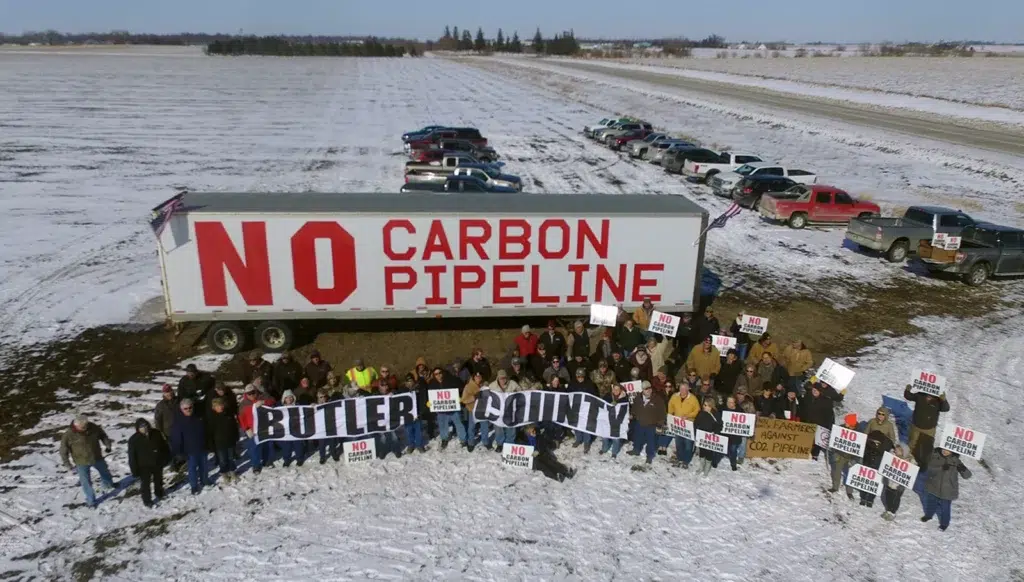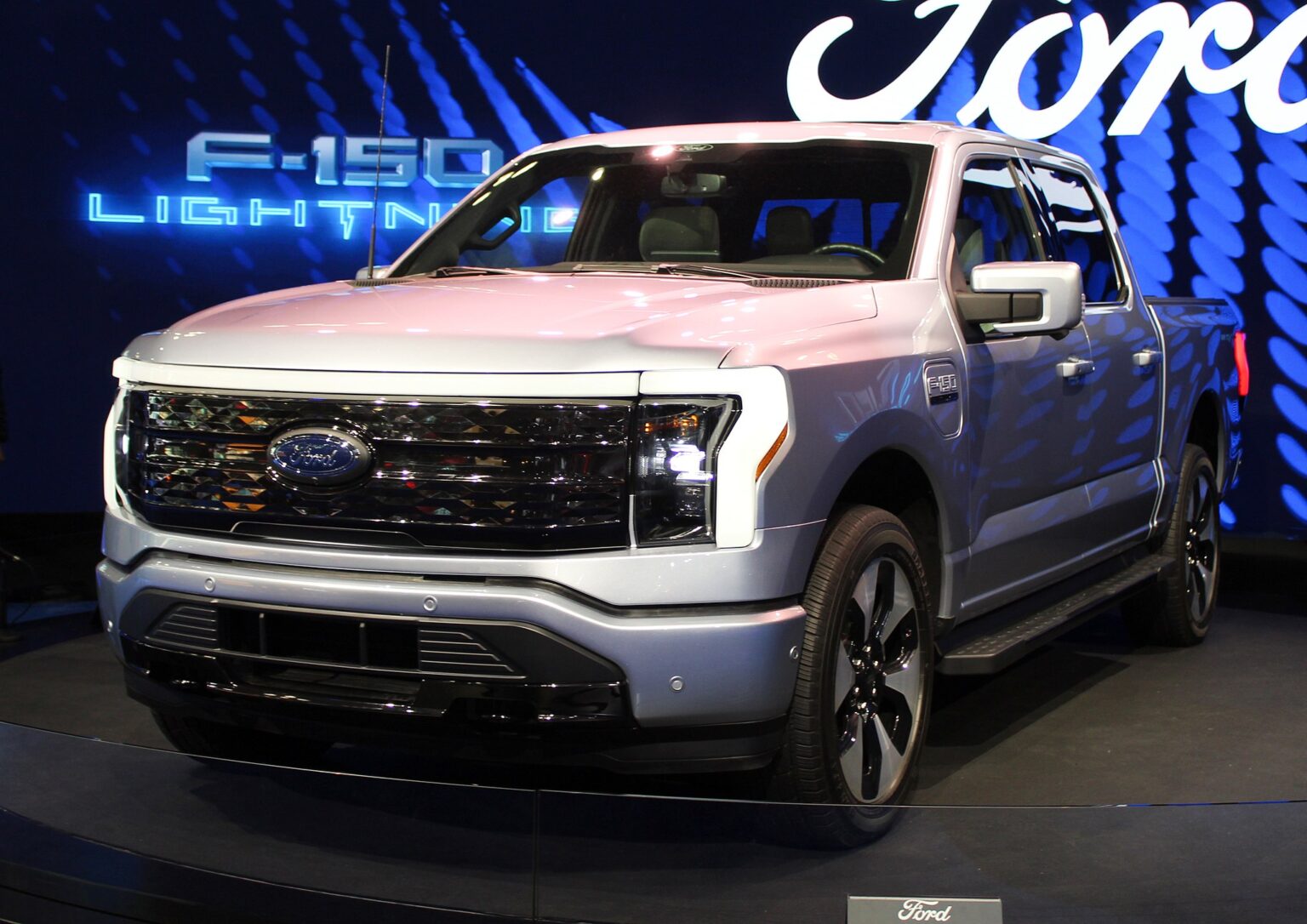As the Ford Motor Company cuts production of its electrically-powered F-150 Lightning pickup trucks, recent research demonstrates that the Lightning outperforms conventional and alternative-fuel-powered F-150 models.
Stanford University researcher Mark Z. Jacobson’s analysis of alternatives to gasoline-powered vehicles also found that a proposed plan to capture carbon emissions from three dozen plants producing ethanol-based automotive “flex fuels” would lead to more pollution than an all-electric approach.
Transitioning to battery-electric vehicles (BEVs) charged by wind power would save drivers billions in fuel costs, according to Jacobson’s study, which was published in October in the peer-reviewed journal Environmental Science and Technology.
To compare the two approaches, Jacobson, the director of the Atmosphere/Energy program at the Stanford School of Engineering, created dueling scenarios involving current fuel- and battery-powered models of the Ford F-150 pickup truck, and then estimated the carbon dioxide emissions that each approach would create.
In the ethanol scenario, Jacobson evaluated a recent real-world proposal by Summit Carbon Solutions to add carbon capture technology to its 34 ethanol plants in five states — Iowa, Minnesota, Nebraska, North Dakota, and South Dakota — as well as a 2,000-mile pipeline system that would transport the captured CO2 for underground sequestration.
The Sierra Club of Iowa, which sponsored Jacobson’s study, has been protesting the Summit Carbon carbon capture project.
The ethanol from these refineries is blended with gasoline to form a flex fuel for vehicles such as the F-150. A flex fuel vehicle has a combustion engine designed to work using gasoline, ethanol, or a fuel blending both together.
The Summit project — named Midwest Carbon Express — was initially budgeted at $5.6 billion and supposed to be operational in 2024, but has faced considerable opposition from environmental groups and local landowners. The company now plans to make the project operational by 2026.

Jacobson selected the F-150 models for the study “not only because they are built by the same manufacturer and are roughly equivalent in capabilities, but also because they are common vehicle types used in these states,” he wrote. The Ford F-150 pickup has been the best-selling American light truck for the past 47 years.
According to Jacobson’s findings, a wind-plus-electric F-150 scenario that cost the same $5.6 billion to develop would produce 2.4 to 4 times less CO2 emissions than the Summit project’s ethanol and carbon capture approach.
This is because the electric F-150 scenario eliminated all of the CO2 emissions created during ethanol production — including growing and fertilizing the corn used as a feedstock for ethanol — as well as 100 percent of the tailpipe emissions produced by fuel-powered F-150s.
These findings factored in CO2 emissions generated by building the wind turbines and vehicle batteries.
Jacobson also estimated that the wind and BEV approach would save drivers in the five states $40 – 66 billion in fuel costs over three decades, even after accounting for the higher up front price of an electric F-150 — which currently costs over $21,000 more than its gasoline-powered equivalent.
Moreover, Jacobson found that the BEV’s power efficiency was considerably better than its flex fuel equivalent. To compare their energy consumption, Jacobson converted both fuel used per hour and battery power used per hour into an energy unit called a “gigajoule.” He found that while the fuel-powered F-150 got 157 miles per gigajoule, the battery-electric F-150 got 579 miles per gigajoule — roughly the equivalent of 52 miles per gallon.
While Jacobson’s study deals primarily with climate impacts, he also notes the growing body of research regarding other benefits of fully transitioning off fuel-powered vehicles such as lowering deaths from air pollution. Wind farms also take up only a very small fraction — about 1/400,000th — of the land needed to mine oil, grow corn for ethanol, and site refineries and carbon capture pipelines.
Using wind energy to provide the power for carbon capture would not substantially lower emissions from producing and burning flex fuels, Jacobson states. “The reason is that all carbon capture requires energy and never reduces air pollution, mining or infrastructure. Even using renewable energy to power carbon capture prevents the renewable energy from replacing a fossil or bioenergy source of combustion, thereby preventing the renewables from reducing more CO2 in addition to reducing air pollution, mining and infrastructure, which carbon capture never does.”
The U.S. ethanol industry has a long history of federal subsidies. Most recently, the Biden administration announced that it would adjust a federal greenhouse gas emissions model to allow aviation fuel made from ethanol to be eligible for considerable additional subsidies.
The U.S. and Canada are world leaders in public funding for carbon capture projects, and two of the Biden administration’s signature legislative wins, the Inflation Reduction Act and the Infrastructure Investment and Jobs Act, both provide considerable tax breaks and financial support for carbon capture projects.
There are also the underlying safety concerns. The carbon capture industry has been downplaying or dismissing public concerns over the safety of carbon capture and sequestration infrastructure in the wake of the 2020 mass carbon dioxide poisoning event in Satartia, Mississippi.
After significantly expanding its EV production capability in 2023, Ford announced in January that it would cut production of the F-150 Lightning EV by about half. The company said the move was prompted by lower consumer demand for the vehicles. Ford also announced plans to increase production of gasoline-powered light trucks, such as the Bronco SUV and the Ranger pickup.
In a press release, CEO Jim Farley said Ford still has faith in the F-150 Lightning, calling it “America’s best selling EV pickup.”
“I’m sure if demand increases, they will increase production,” Jacobson told DeSmog.
“Most people don’t realize they will make up for the higher up-front cost,” he said, “and then start saving lots of money within a few years after purchasing the vehicle.”
Subscribe to our newsletter
Stay up to date with DeSmog news and alerts







